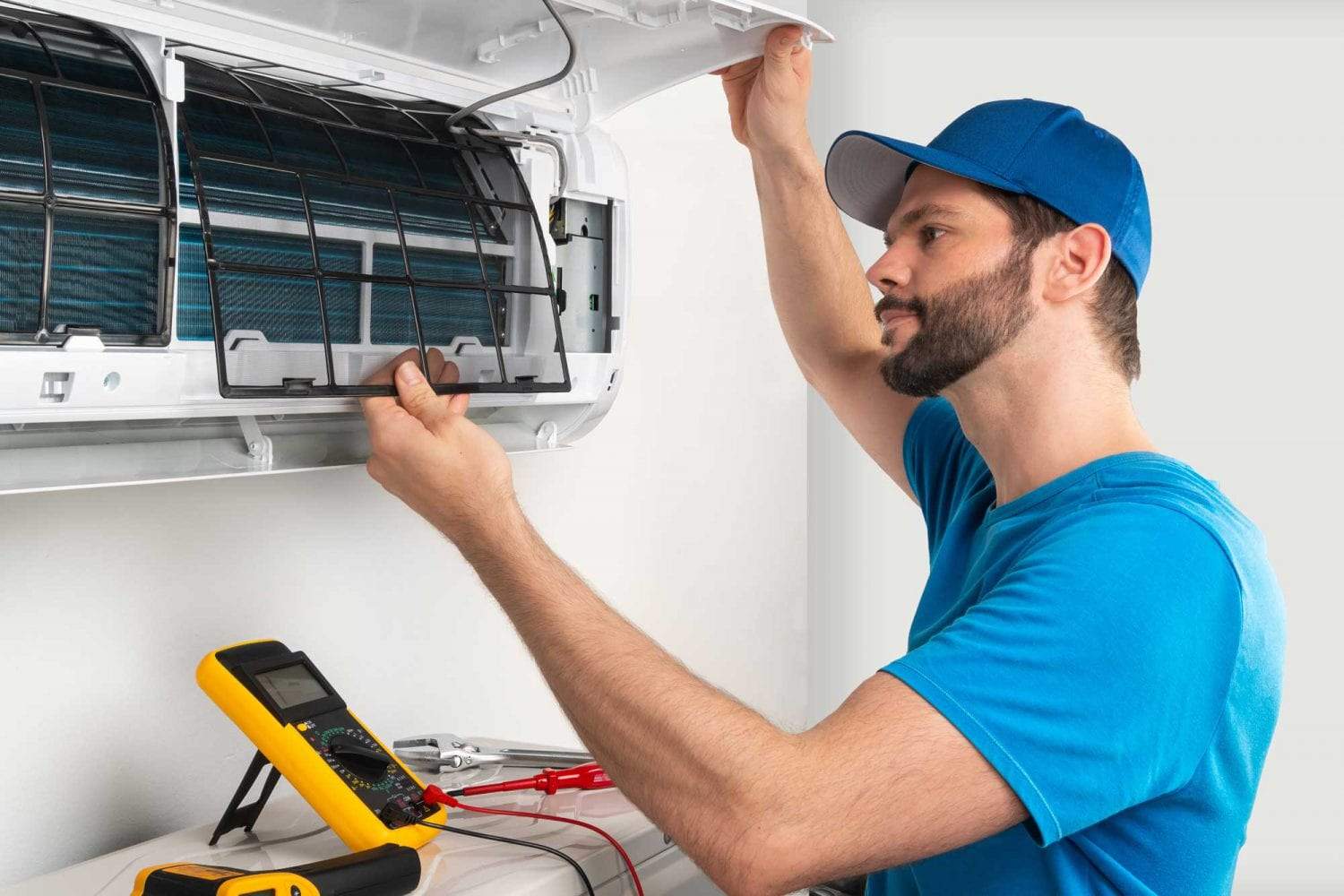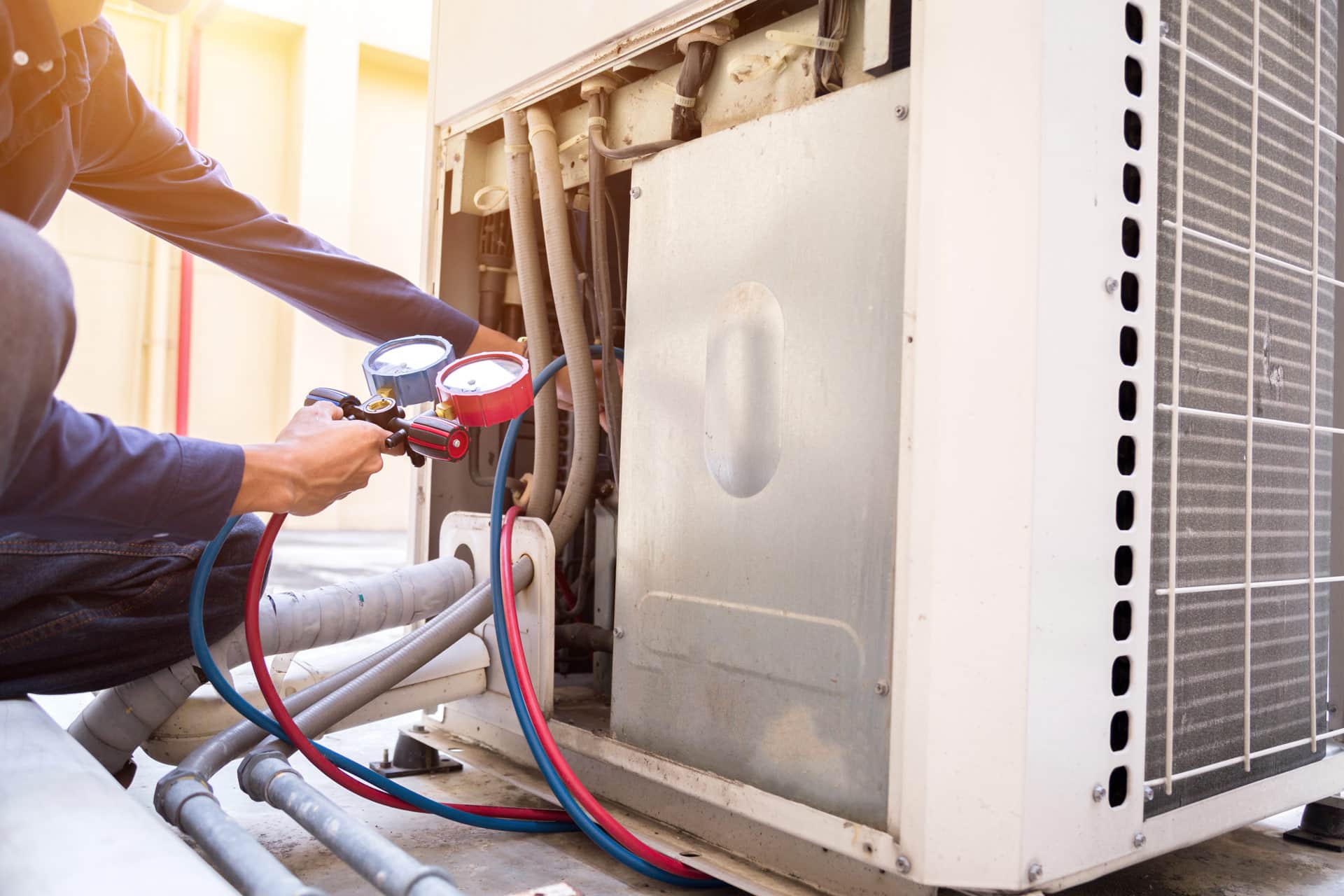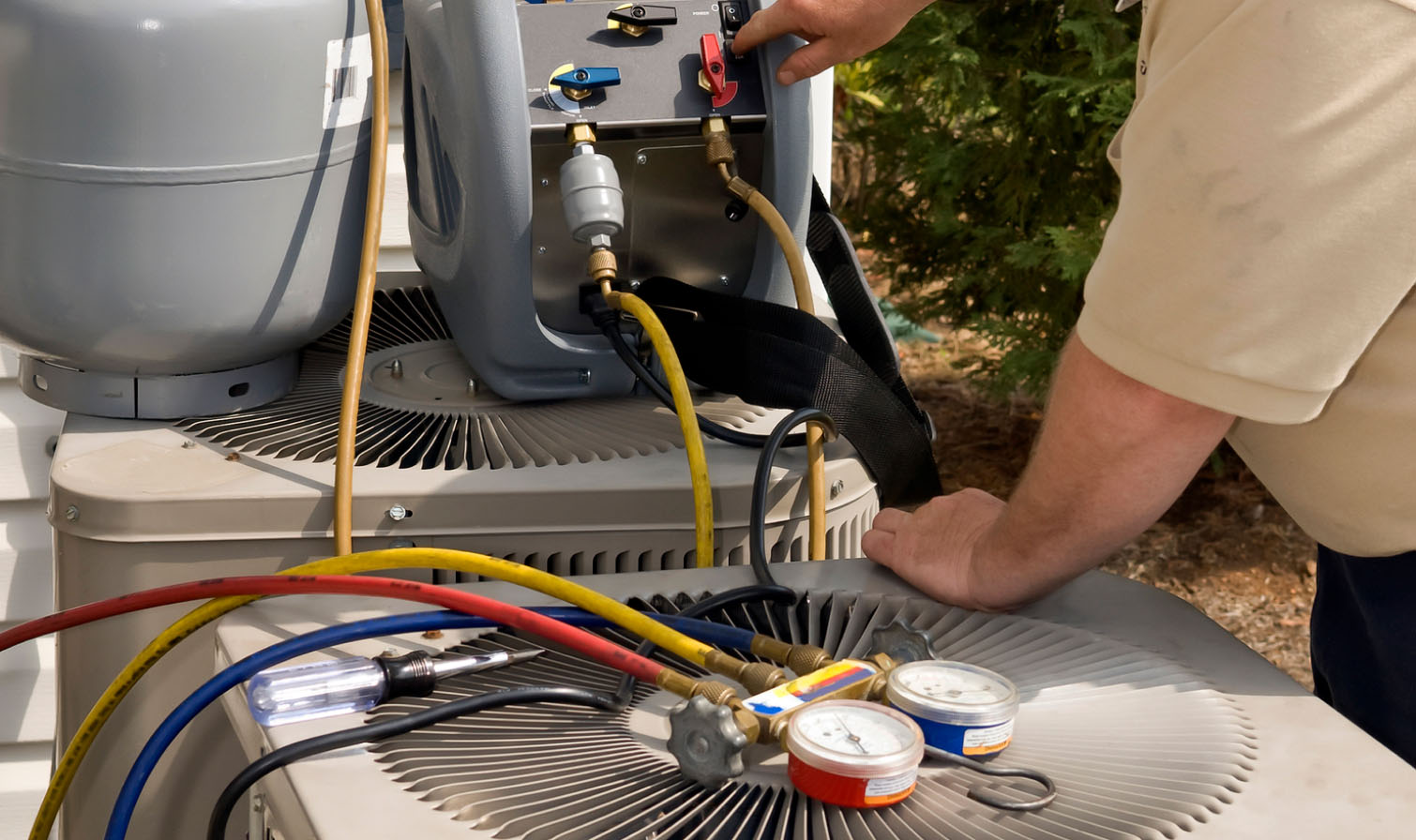Emergency Air Conditioner Repair Near Me: Effective Environment Control Systems Are Important For Indoor Comfort And Energy Savings
Components and Systems: The A/c Symphony
Ever question what really orchestrates the environment control in your abode or workplace? It's even more than just a box humming exterior. We're talking about an advanced interaction of elements, a genuine symphony of engineering developed to preserve your convenience, come rain or shine, or perhaps the most blistering heatwave. Understanding these private parts, and how they coalesce into a unified system, is critical for any property owner or facility manager. Think about it like a human body: each organ has an essential role, however it's their collective function that keeps us alive and flourishing.
The Core Players: What Makes it Tick?

At the heart of a lot of property and light business HVAC setups, you'll discover numerous crucial players. Do you truly know what each one does? Let's break down the necessary cast:
- Heater: The heating powerhouse, usually fueled by gas, propane, or electricity. It warms the air that then distributes throughout your space.
- A/c unit: The cooling champion, getting rid of heat and humidity from indoor air through a refrigerant cycle.
- Ductwork: The circulatory system of your heating and cooling, a network of channels that distributes conditioned air to numerous rooms and returns stagnant air for reconditioning. Without effectively sized and sealed ducts, even the most effective unit can falter.
- Thermostat: The brain of the operation, allowing you to set and keep desired temperature levels. Modern thermostats are capable of unbelievable accomplishments, from Wi-Fi connectivity to discovering your preferences.
Beyond the Essentials: Integrated Systems
While the furnace and a/c unit are often unique systems, they regularly share typical components, forming an integrated system. The same blower fan within the heating system typically moves air for both heating and cooling. This smooth integration is what makes a modern-day heating and cooling system so efficient and easy to use. Consider the classic situation: a sweltering summertime day offers way to a surprisingly chilly night. Your system, if correctly designed, shifts easily from cooling to heating, ensuring continuous comfort without you raising a finger. It's genuinely a marvel of modern-day comfort technology.
Improving Air Quality: More Than Simply Temperature
Beyond just warming and cooling, modern heating and cooling solutions frequently integrate elements focused on improving indoor air quality. Are you knowledgeable about the invisible dangers prowling in your air? From allergens to pollutants, an excellent system actively combats them. This can consist of innovative filtration systems, humidifiers to add moisture in dry environments, or dehumidifiers to extract excess humidity. Some systems even integrate UV lights to eliminate air-borne pathogens. It has to do with developing a holistic environment, not simply a comfy temperature. What good is comfort if the air you breathe is substandard?
Heating & Cooling Concepts: The Hidden Ballet of Comfort
Ever wonder why one space feels like a sauna while the next is an icebox, despite your thermostat's impassioned prayers? The response typically depends on a nuanced understanding of heating and cooling concepts, a subtle dance of energy transfer that determines our indoor comfort. It's not simply about cranking up the air conditioner or stoking the heater; it has to do with handling the circulation of heat, that relentless tourist always looking for stability. Think about it like water streaming downhill-- heat constantly moves from warmer areas to cooler ones. This essential reality underpins every aspect of efficient a/c system operation, yet it's regularly overlooked, leading to consistent pain and, frankly, squandered energy.
The Elusive Even Temperature Level
The most typical disappointment property owners voice centers on unequal temperature levels. You change the thermostat, hoping for a blanket of convenience, just to find one room sweltering while another shivers. Why does this take place? Typically, it's a sign of incorrectly sized or inadequately well balanced ductwork. Imagine a garden hose attempting to water a whole website lawn; some locations get soaked, others remain parched. Likewise, if your ductwork isn't developed to deliver the ideal volume of conditioned air to each area, hot and cold areas end up being an inescapable truth. A typical mistake is assuming that just adding more vents will fix the problem. In reality, it can exacerbate it by disrupting the delicate balance of atmospheric pressure within the system. An a/c technician worth their salt will carry out a Manual J load calculation, a comprehensive analysis that figures out the accurate heating and cooling requirements of each space, considering aspects like window size, insulation, and even the variety of residents. Without this foundational action, you're basically flying blind.
Tricks of the Trade for Ideal Performance
- Zoning Systems: For supreme control and efficiency, consider a zoning system. This permits you to divide your home into unique temperature level zones, each with its own thermostat. No more heating or cooling unoccupied rooms! It's like having several mini-HVAC systems tailored to your lifestyle.
- Duct Sealing: Dripping ducts are infamous energy burglars. A substantial portion of conditioned air can escape through unsealed seams and holes before it even reaches your home. Professional duct sealing with mastic or specific tape (not just normal duct tape, which stops working rapidly) can drastically enhance efficiency and remove phantom drafts.
- Insulation's Role: Your home's insulation acts as the bouncer for heat, avoiding it from crashing the party in summertime and getting away in winter season. Is your attic adequately insulated? Are your walls simple screens for thermal energy? A simple examination can reveal substantial chances for improvement.
- Fan Settings Matter: Many homeowners merely set their fan to "auto." While typically fine, think about running your fan continually on a low setting, specifically in shoulder seasons. This helps flow air, minimizing temperature stratification and making your home feel more regularly comfy, even if the main heating or cooling isn't actively running.

Comprehending these fundamental heating and cooling concepts empowers you to make educated choices about your home's comfort and energy consumption. It's not practically fixing a damaged unit; it's about orchestrating a symphony of warmth and coolness, making sure every note is played perfect.
The Breath of Life: Ventilation and Air Quality
Ever strolled into a space and felt that immediate stuffiness, that sense of recycled air holding on to your lungs? It's a common experience, a subtle yet persistent pain that typically goes unaddressed. Numerous property owners, concentrated on heating and cooling, ignore the vital role of ventilation in their a/c system. It's not simply about temperature level; it has to do with the very air we breathe. Think about your home as a living organism; without appropriate air flow, it suffocates, trapping pollutants, irritants, and even stale smells. This oversight can cause a host of indoor air quality concerns, a quiet foe deteriorating comfort and possibly affecting wellness.
Among the most considerable difficulties property owners face in maintaining exceptional indoor air quality centers on the build-up of tiny air-borne particles. These unnoticeable invaders, ranging from allergen and pet dander to mold spores and volatile organic compounds (VOCs) off-gassing from furniture, flow constantly without appropriate air exchange. Think of trying to clean a dirty space by merely moving the dust around; that belongs to recirculating stagnant air without introducing fresh, filtered air. This constant re-exposure can exacerbate breathing conditions, trigger allergies, and usually reduce the feeling of a tidy, healthy home. However what can be done to really clear the air?
Beyond the Standard Filter: Advanced Air Purification
While basic heating system filters catch larger particles, they typically fall short when it concerns the really minute pollutants. This is where the critical house owner considers upgrading their heating and cooling system's air filtration. Have you considered a MERV 13 or greater filter? These pleated powerhouses can trap a considerably greater portion of air-borne particles, consisting of germs and even some viruses. The journey to pristine air doesn't end there. For a really thorough method, UV germicidal lights incorporated into your ductwork use an extra layer of defense, neutralizing air-borne pathogens as they pass through. It's like having a microscopic bouncer for your air, making sure just the cleanest particles make it into your living area. And for those with persistent odor issues or chemical sensitivities, a whole-house triggered carbon filter can be a game-changer, absorbing gaseous pollutants that even the finest particulate filters miss out on. It's about proactive defense, not reactive relief.
- Examine and change air filters quarterly, or more regularly if you have family pets or allergic reactions.
- Think about a whole-house humidifier or dehumidifier to manage indoor humidity levels, which can impact mold growth.
- Make sure proper sealing of ductwork to prevent unfiltered air from going into the system.
- Utilize exhaust fans in kitchens and restrooms to eliminate wetness and cooking smells at their source.
Did you understand that merely opening windows for a couple of minutes every day, even in winter, can drastically improve indoor air quality by watering down pollutants? It's a basic, cost-effective technique that many overlook. Moreover, tactically placed indoor plants, such as spider plants or peace lilies, can serve as natural air purifiers, taking in particular toxins from the air. While they won't change a robust ventilation system, they use a quaint, green complement to your indoor air strategy. The objective is to create an environment where the air is not just comfortable in temperature level, however genuinely invigorating to breathe.
Installation and Upkeep: The Unsung Heroes of A/c Longevity
Ever wonder why some a/c systems purr like contented kittycats for decades while others sputter and cough their dying breath far prematurely? The secret, dear reader, frequently lies not in the preliminary purchase, but in the careful dance of setup and the thorough rhythm of upkeep. It's a tale as old as time, or at least as old as cooling itself: a system, no matter how sophisticated, is just as good as its setup and subsequent care. A poorly installed system can lead to a cascade of issues, from inefficient operation that drains your wallet much faster than a leaking faucet to early component failure. Picture trying to run a marathon with ill-fitting shoes; you might finish, but not without substantial pain and potential injury. Your HVAC system deals with similar hardships when not appropriately integrated into your home's unique thermal envelope.
Think about the airflow. A typical oversight during installation, and one that causes unknown headaches, revolves around correct ductwork sizing and sealing. It's like attempting to consume a milkshake through a small, punctured straw-- you're exerting a great deal of effort for extremely little reward. Undersized ducts restrict air flow, requiring the blower motor to work harder, taking in more energy, and reducing its lifespan. Leaking ducts, on the other hand, resemble throwing money out the window, actually, as conditioned air leaves into unconditioned areas. Did you know that up to 30% of a home's heating and cooling energy can be lost due to leaking ducts? It's a staggering figure, frequently overlooked, and quickly fixed with appropriate sealing methods utilizing mastic or customized metal tape, not simply the flimsy cloth-backed duct tape everyone erroneously calls "duct tape."
The Rites of Routine Upkeep
You've got a completely installed system. Now what? The journey doesn't end there; it simply begins a brand-new chapter: upkeep. Believe of your a/c system as a high-performance vehicle. Would you ever avoid oil modifications or tire rotations? Of course not, due to the fact that you comprehend the long-lasting consequences. Disregarding your Heating and cooling system's yearly tune-ups is a gamble you're unlikely to win. These aren't simply approximate visits; they are essential preventative measures. A technician checks refrigerant levels (the lifeline of your system), cleans up coils (those unrecognized heroes of heat exchange), examines electrical connections (preventing prospective fire threats), and lubes moving parts. It's throughout these gos to that small issues, easily rectified, are caught before they blossom into costly breakdowns. A filthy evaporator coil, for circumstances, can reduce performance by 5-10%, requiring your system to work more difficult to achieve the desired temperature. It resembles trying to breathe through a blocked nose; everything ends up being harder.
Here are a couple of expert insights to keep your system humming:

- Filter Skill: Modification your air filter every 1-3 months, especially if you have family pets or allergies. A stopped up filter is a major airflow obstacle, minimizing efficiency and putting stress on your system.
- Clear the Condensate Drain: Regularly pour a cup of distilled vinegar down your condensate drain line. This prevents algae and mold growth that can obstruct the line, causing water damage and system shutdown.
- Outdoor System TLC: Keep the location around your outside condenser unit clear of debris, leaves, and overgrown greenery. A foot or more of clearance on all sides guarantees correct air flow, which is important for efficient heat dissipation.
- Thermostat Wisdom: Think about upgrading to a programmable or clever thermostat. These gadgets can discover your habits and optimize temperature level settings, conserving energy and extending the life of your system by lowering unnecessary biking.
Remember, a little proactive effort in installation and upkeep goes a long method in ensuring your heating and cooling system provides constant comfort and effectiveness for several years to come. It's not almost convenience; it's about securing your investment and ensuring assurance.
Comments on “Furnace Repair Services: When to Change Your AC Unit Instead of Repairing”